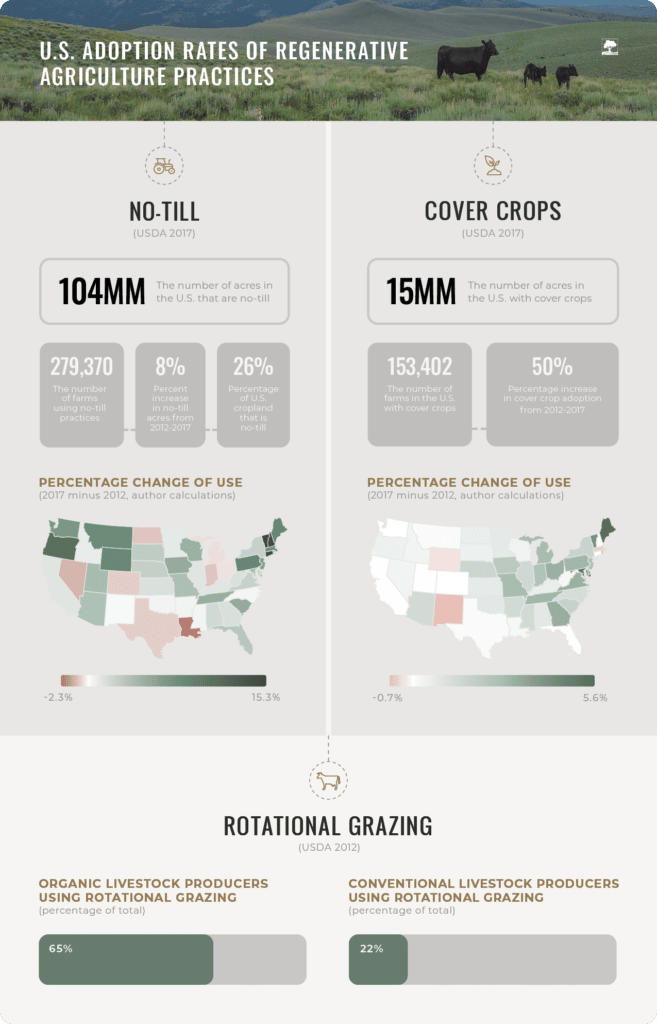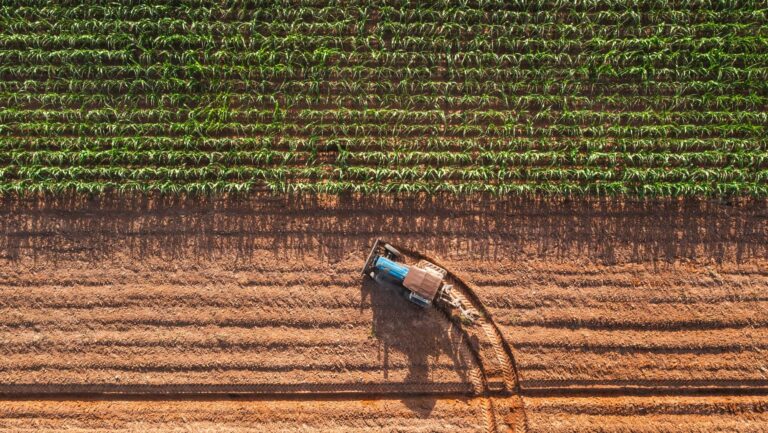Overcoming the Financial Barriers of Regenerative Agriculture
Regenerative agriculture practices are gaining more visibility than ever, but several barriers still stand in the way of widespread adoption.
While many common misconceptions about U.S. agriculture and its role in the environment have been disproven, an information gap around regenerative agriculture and its benefits still exists. To explore this topic further, AgAmerica collaborated with farmers, ranchers, and industry experts to create a comprehensive guide on not only the benefits of regenerative agriculture but also the tools available to implement these practices on your farm.
Adoption Rates for Regenerative Agriculture
According to the USDA, more than one-third of U.S. farmers have implemented no-till cultivation techniques while around five percent have implemented cover crops. While adoption rates are increasing, there is still significant progress that needs to be made as we work towards a more sustainable future.

As the conversation around regenerative agriculture grows and more support becomes available, the adoption rates of these practices will likely continue to increase across the nation.
Three Barriers of Entry for Regenerative Agriculture
If the benefits of regenerative agriculture have been proven, then why aren’t more farmers and ranchers implementing these practices? Despite the benefits, regenerative practices are sometimes viewed as risky investments and difficult to measure success. By working to increase knowledge and information surrounding these techniques and their payoffs, advocates of regenerative agriculture hope to make the adoption of these practices widespread.
Three common entry barriers in the regenerative ag space—and how to overcome them—include:
1. Financial Risk
Because regenerative practices often require an upfront cost, some farmers and ranchers question whether these practices will help or hurt their bottom line. When considering regenerative practices such as cover crops, it’s important to think about the long-term benefits. Despite initial costs, input costs in the long-term are likely to decrease due to healthier soil and decreased use of fertilizer and other chemical inputs.
In a survey of 746 farmers, 58 percent saw their soil health improve less than two years after planting cover crops. In addition to the reduction in input costs, there is also an opportunity to sign a carbon contract to receive compensation for carbon sequestration practices. However, there is much improvement that needs to be made in the “wild west” carbon market where there is little regulation or consistency. This lack of oversight is a likely factor in blocking more widespread adoption. With only one percent of farmers having signed a carbon contract according to a 2021 Purdue study, there is substantial opportunity to tap into going forward.
To determine how regenerative practices could impact your operation, we recommend speaking with your lender or a regenerative agriculture expert to learn more.
2. Lack of Implementation and Logistical Resources
Another reason more farmers haven’t adopted regenerative practices is due to the lack of resources to implement these practices. While some farmers have been implementing these practices for years, there is still more that needs to be done to disseminate this information across the industry. Because of immense regional differences, local organizations and farmer groups play an important role in supporting farmers as they embark on their regenerative journeys.
Staying informed on the latest developments in the regenerative ag space is a great way to strategically plan for your operation’s future.
3. The Ability to Measure Success
Currently, it can be a difficult task for farmers to accurately measure the impact of regenerative agriculture practices. For instance, there are several ways of measuring soil health, and it can be confusing when trying to select the best method for you. Working with companies who specialize in this area can be beneficial when evaluating the impacts of these practices.
Working with an expert in soil health can help you discover the most effective measurement strategy and ensure data is as accurate as possible.
Secure Financing for Regenerative Agriculture with AgAmerica
AgAmerica works with farmers, ranchers, and landowners across the nation to provide resources that help break down the barriers to regenerative agriculture. Our flexible working capital loans, such as our ten-year line of credit, provide the capital needed for the initial investment and can start your climate-smart journey off on the right foot.
Learn more about regenerative agriculture and how it could benefit your operation by downloading our free whitepaper. Inside this whitepaper, you will find firsthand insights from farmers, ranchers, economists, and industry leaders.
As an exclusive bonus when downloading the whitepaper, you will also have access to two checklists—one tailored to crop production and the other for livestock production—to help guide your transition to more regenerative ag practices.






